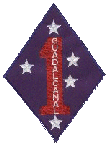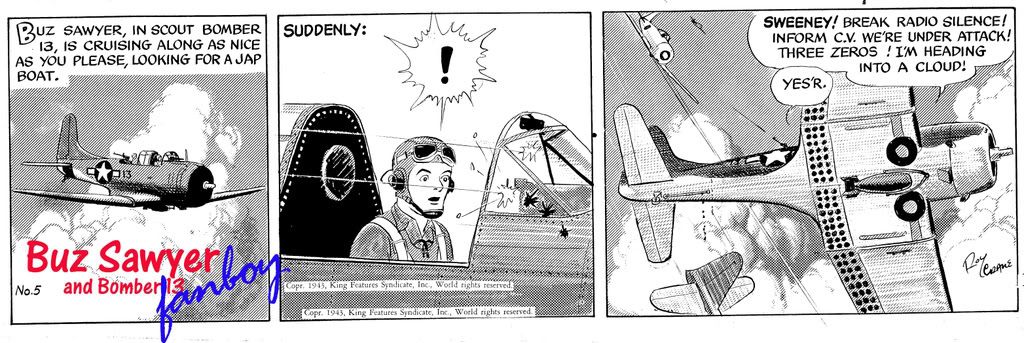byron13
Posts: 1589
Joined: 7/27/2001
Status: offline

|
Huh? I don't understand your point. More likely, you weren't able to discern mine from my ramblings.
The most important point is that, regardless of how detailed the production is in the game, the game needs to provide the human with a clear picture of what the results of the human's decisions are going to be. I refer you to Talonsoft's Twelve O'Clock High: Bombing the Reich game (also by Gary). The German has the ability to change production of various kinds of aircraft. He also has to be sure to convert factories to make the proper engines and parts for that aircraft. Sometimes the aircraft aren't produced in the quantities expected or they don't produce at all, and the game provides no explanation. It could be that there is an engine shortfall because other plane models have priority, or rail damage or a shortage of electricity is preventing a necessary resource from reaching the factory, or some other reason. The point is that the human player doesn't know why the desired aircraft is not being produced and, hence, does not know how to rectify the situation. It just doesn't happen, and you are left wondering if there is a bug in the program.
I can see where WiP:SAJ could have the same frustrating problems. You set sliders to build lots of battleships and four-engined bombers, but you only get a trickle. The game needs to let you know why. If resources are an issue, it needs to let you know how many are on hand and how much each item being produced requires. If the Japanese are sinking all the guava, chicle, and rubber ships, then you need to have an indication so that you can say, "Hmmm. Guess I need to provide more escorts" or at least know that you can't count on having chewing gum and had better plan on something else. The point is: the game needs to tell me that if I set my production a certain way, I will get X number of ships. If there is some other factor that could increase/decrease that figure, I need to know that factor's status as well. Don't leave me wondering why I'm not getting the expected results, or these forums (fora?) will be burning up with people asking what the heck is going on. It is a plea to design the production system - whatever it ends up being - right the first time.
The other point that emerged only as I wrote is that a priority-based system would be ideal. I can envision an interactive chart with the various items being produced listed down the side, and then columns for desired quantity produced per month (ships would be handled differently), a column for the required amount of each necessary resource input (rubber, steel, etc.) to make the desired number, a similar column showing the amount of resources actually on hand that will be devoted to making the item, and a column showing actual output. Thus, you might desire 100 tanks per month, it requires 10 points of steel, but there is only 8 points of steel available in the third column, which results in the actual output column showing only 80 tanks being produced. You would then rank each item to be produced by numeric priority. The computer would provide the necessary resources to build the highest priority units until the resources run out.
You could then design your production by either:
1. Building as much of the high priority stuff as you want/can and just not build lower priority stuff because there are insufficient resources (and you would know this because the quantity produced column would be zero as would the quantity on hand of whatever resource is lacking), or
2. Set up your production carefully so that you're making some of everything by scaling back the desired production quantity of the high priority stuff to provide sufficient resources to trickle down to lower priority. If you fell asleep at the switch and didn't check the chart for a month, and if there was a decrease in resource quantities, the priority of resources would still go to the high priority stuff, and the low priority stuff would stop being produced until you reset the desired production figures again.
You might also be able to push a button to instruct the computer to decrease all production by the same percentage if there is a shortfall in resources. For example, once you've set up your production, if there is a 5% decrease in rubber for some reason, all items requiring rubber would decrease production by 5% (assuming you were using all the rubber available) instead of having the lowest priority production item taking the full brunt of the rubber decrease.
Finally, if there are production delays due to converting to a new design, the computer would give you a note off to the side. You would then know that there will be a one month delay if you retool the P-40 factory to make P-38's. In some instances, the computer may not give you any advanced warning of a delay, and these would represent unanticipated delays, e.g., problems in converting cruisers to carriers. Though not anticipated, and though the computer may not tell you how long the delay will last, you will still know that the item will not be produced due to a delay.
I like this idea because it provides me with maximum control of production, I can see graphically exactly at what rate things are being produced, exactly why things are NOT being produced and what I need to change, and I believe this is an exceptionally easy thing to program. You are simply putting in visual form the exact same math computations that the computer is going to have to do anyway.
_____________________________
|
 Printable Version
Printable Version








 New Messages
New Messages No New Messages
No New Messages Hot Topic w/ New Messages
Hot Topic w/ New Messages Hot Topic w/o New Messages
Hot Topic w/o New Messages Locked w/ New Messages
Locked w/ New Messages Locked w/o New Messages
Locked w/o New Messages Post New Thread
Post New Thread